The road from Merta City to Osian was single lane after a few kilometres ahead of Merta. It was not a national or a state highway we were driving; it is called MDR58 as per Google Map, I did not know what that meant, but the good thing was that the Google navigation was working perfectly. Especially when Bindu, our driver, told me that he had never driven through these roads. And then came the warning from him –
“Sir, this road is not safe for driving.”
“What do you mean?”
Momentarily I laughed hearing those words of caution from him. I mean, I did not see anything suspicious anywhere that can raise a question in my mind. Neither was I aware of anything that happened in the recent past. And I did travel in far worse roads than this one.
Probably Bindu somehow managed to see my smile and told me, “You know there was a local gangster here who was gunned down a year back and these are all his territories. You will not find many cars that drive on this road. And if our car breaks down here, it will be hard to get another car or get someone who can help.”
Honestly, I thought Bindu was not happy driving according to my detour plan, and that’s why he was trying to scare me.
“Why do we need another car?” I asked. “You will fix ours.”
“I do not have spares with me”, he said. “Not even a spare wheel”.
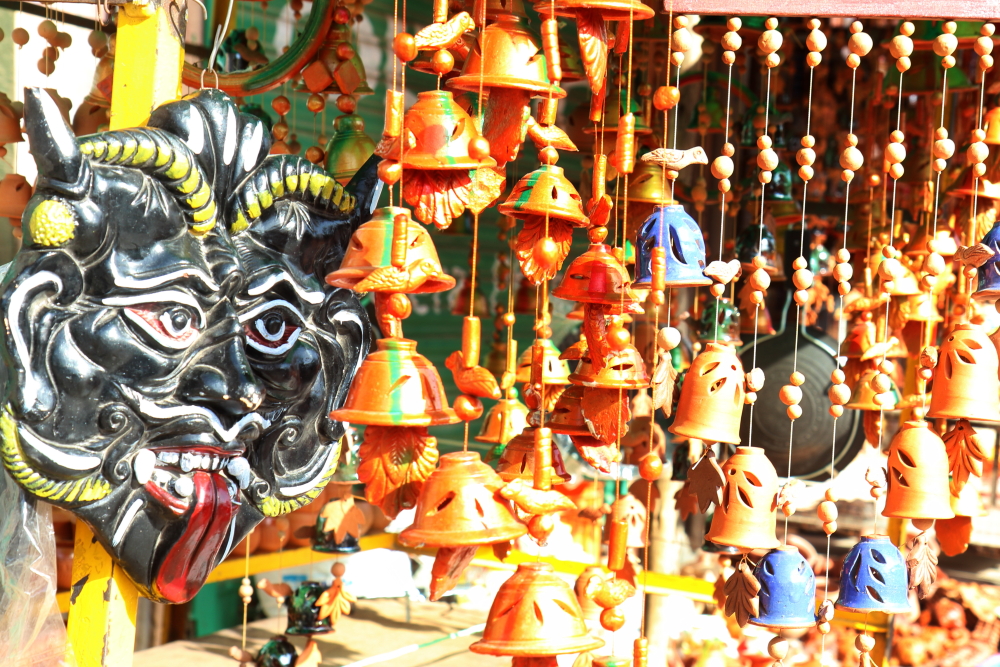
This time I was a little afraid. The thought of getting ripped randomly by some unknown gangster followers was less scary to me than driving from Jaipur to Jaisalmer without a spare wheel. But why the hell would he not have spares on a long trip like this? This thought really confused and irritated me. I asked him about it, and he told me that he had the Stepney (spare tyre), but it was punctured. And he would fix it once we reach Jaisalmer.
What the hell? Why did not he fix it a day before?
Anyway, I only uttered those words in my mind and thought there is no point arguing it now. So I took out my pen drive, that I always carry with me on a road trip, attached it to the car audio.
But despite all my efforts to keep myself numb, I was almost going to curse him on his utter irresponsibility. Then, all of a sudden, Arijit Singh started singing from the double din music system of our Innova “Jo tere khatir tadpe pehle se hi kya usse tadpana, O zaalima O zaalima“.

In the morning, things were as per my expectation. Bindu parked his seven-seater Toyota Innova right in front of our hotel in Jaipur 25 minutes before the time that I had told him to come.
Bindu alias Shankar Choudhury, a lean and thin, 5’8” tall Jat with large eyes, aquiline nose and shrunken cheeks introduced himself to me as the driver and guide for our next five days trip on the roads of Rajasthan when I came to the Lobby after getting a call from the hotel reception “Sir, your driver has come”. I thanked him for coming before time and told him to wait for 30 minutes as we were almost done.
After a fun-filled day sightseeing in Jaipur, it was time to move to Jaisalmer. The plan was to go straight to Jaisalmer without any night stay in between. I decided to stay in Jodhpur while returning from Jaisalmer and accordingly all the hotel bookings were made two months back. So, on that day, we had to cover around 600 kilometres with planned breaks in Pushkar and Ramdevra and possibly a couple of undecided ones on the way.
And I assumed that the whole journey would take around 12 hours to complete, Though we were driving 30 kilometres less by not going via Jodhpur, the road condition would not be as good as the Jaipur-Jodhpur-Jaisalmer route which possibly might cost us a couple of hours extra.

We started around 6:30 from our hotel in Jaipur. Only 30 minutes late from our scheduled departure time. Honestly, that was pretty quick in comparison to my previous experiences. I helped Bindu to fasten the two large trolley bags on the roof while the smaller handbags and a cabin trolley bag were easily accommodated in the back after folding one half of the rear seat. The camera backpack was with me as always.
I had already cleared all the hotel dues yesterday evening. So once we packed our bags in the car, there was nothing left to do apart from tipping the hotel staff who helped me to shift all these luggage from our room.
The journey began on a high note. Finally, it was time to experience the road trip that was long on my bucket list.
Pin it to read later!
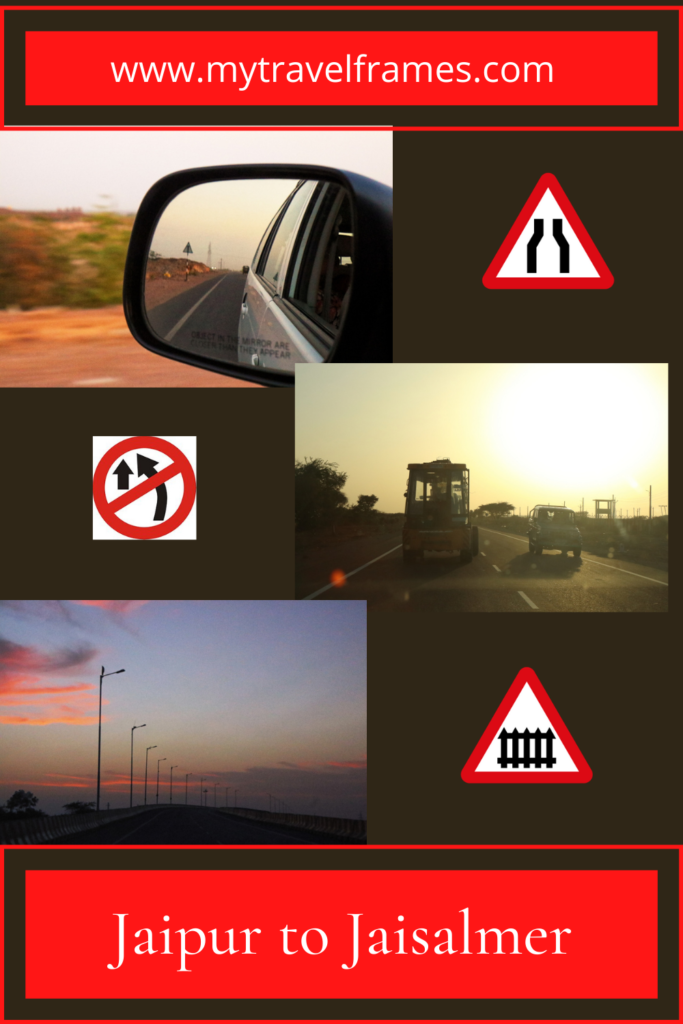
Our Initial Route Map
When we started, Jaipur was waking up slowly from sleep. The sun rays just started to scatter from the horizon after two days of dark cloud and frequent showers. The roadside walkway near Jal Mahal was all empty, and the Amer Fort looked sleeping quietly on the hillock, the first rays of the sun were yet to hit it.
The first two hours of the drive was nothing much to say except the beautiful sunrise that we saw from the highway. The roadside dhabas were empty, and the staffs were sweeping the dusty spaces in front.
We were not in the mood for breakfast yet as we had planned to have it in Pushkar. A cup of tea would be nice, but then, all of us were not arose completely from sleep. And my little son was busy in completing his quota of sleep that we had deprived him off by waking him up at five in the morning.
I was talking to Bindu about where he is from, how many years he is driving, did he go outside Rajasthan, how much time it would take possibly to reach Jaisalmer, what would be the best route to go there and things like that. I told him that from Pushkar we would follow the route via Merta and catch NH11 on the other side. Bindu was more of a one-sentence answer person and was talking only when I asked something. Except once, when he told me that he knew a priest in Pushkar who was a friend of his elder brother and he would take us to him so that we could seamlessly offer our puja beside Pushkar Lake.
“We are not very keen for a puja,” I said, “but will think of it once we reach Pushkar after assessing how much time we are left with when we finish our breakfast.”
“No problem,” he said, “just let me talk to him once so that he can free a slot for us.”
I told him that it’s not needed, yet he made a phone call and asked his brother’s friend about the probable cost for puja and told that he would call him once we reach Pushkar.

The drive from Jaipur to Kishangarh was buttery smooth. The Jaipur-Kishangarh Expressway forms a segment of NH8 which is a part of the Golden Quadrilateral Project. The distance of this stretch measures around 90 kilometres. The NH8 continues towards Udaipur and finally ends at Mumbai.
We took a right turn from Kishangarh and drove towards Ajmer. When we reached Ajmer, it was 8:30 in the morning. I suggested skipping the visit to Ajmer Sharif this time as we were craving for breakfast and already planned to have it beside Pushkar Lake. Visiting Ajmer Sharif and coming back to Ajmer-Pushkar road would take another two hours at least.
Last time, when I came to Ajmer a year back, I changed a bus here in Ajmer Bus Depot and boarded one towards Pushkar. That was during the Pushkar Camel Fair at the end of October. That time I was on my solo trip to Pushkar and skipped Ajmer too. Maybe on my next trip to Rajasthan, I would cover it and spend a day in Ajmer only.
The new road from Ajmer to Pushkar looked fabulous. The road cutting through the cliffs of famous “Snake Mountain” (Nag Parvat) which forms a natural boundary between Pushkar and Ajmer gave a goosebump last time when I came here. The excitement was probably due to the expectation of something extraordinary that I would witness beyond that range of Aravallis in front. And the potholes on the road made it look more alike as if there was something good waiting for me after this jumping bus ride.
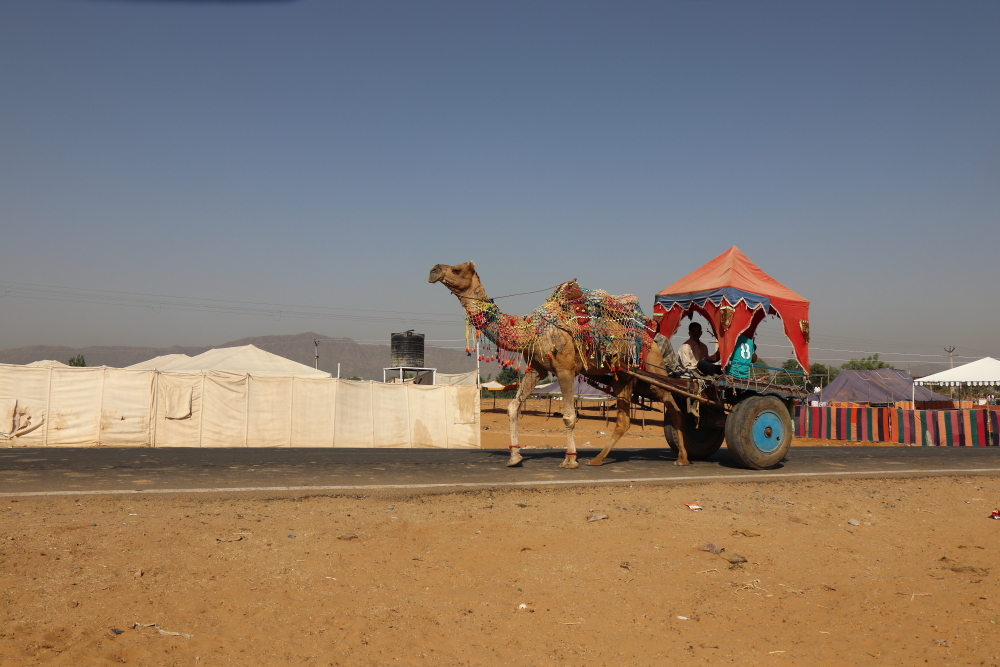
I was expecting the same curiosity that the visuals of Snake Mountain did a year back. But this time I missed it. Probably the pitch-black road from Ajmer to Pushkar took too little time to evoke that feeling.
Well, roads always do play an important part in a traveller’s psychology while on a trip. A bad road makes a destination seem more of an offbeat and pristine to us, in general.
But Pushkar is no way an offbeat place in India. In fact, it is one of the most visited destinations in the country. So, good road connectivity is always a welcome initiative from the government.
We reached Pushkar before 9 am. The car was parked in an open ground near the highway. We took an autorickshaw from the parking lot and went towards the main bazaar area. I was keen to take my family to the same cafe where I had my breakfast while walking on the ghats of Pushkar a year ago. But I forgot the name of the cafe and trying to hunt it through Google search for the last two hours was not much help. So, I told the autorickshaw driver to drop us near Gau Ghat thinking that we would have our breakfast in another cafe beside the lake.
After walking for 50 metres maybe, there was a small cafe called Lake View Cafe on our left with its name written on the wall outside. At first, only I entered there and checked whether it was open, and also surveyed the view of the lake from there.
The cafe was on the first floor of a residential property. It had a nice terrace with a fantastic view of Pushkar Lake from above. The Aravalli mountain was clearly visible on the other side of the lake. For the next hour, we had a delicious breakfast there.
When we finished, it was almost half-past ten, and we had another 450 kilometres ahead of us to complete. So. we made a quick visit to Brahma Temple, which is the only Hindu temple in the world where the deity is the creator God Brahma. And then took an autorickshaw back to the parking. Again we were ready to start our journey forward. We missed the puja this time.

Last year when I went to Jodhpur, I went by an RTDC bus through the highway via Beawar and Jaitaran. This time I was keen to take the route via Merta. I already told Bindu about my plan while driving on NH8 towards Ajmer. Initially, he nodded but then while starting the car engine in Pushkar Parking Lot he seemed not very keen driving on that route. He suggested me to go via Pali which came on the highway towards Udaipur and cut from there towards Jodhpur. I told him that we would take that road when we would come back from Jodhpur to Jaipur after four days, but we will go via Merta Road this time.
Now honestly, that’s not a very popular route which people takes while going to Jaisalmer from Pushkar. But I was rigid that this would be our route whatever time it would take eventually.
As there were no national highways until we join the NH11 (Rewari-Jaisalmer highway) and the road condition after Merta deteriorates, it was expected that it would definitely take a longer time to go by this route. So while Bindu pressed on the accelerator on Pushkar-Dodiyana road, I began exploring Google Maps about which route to take to reach NH11.
Initially, I thought of going via Nagaur but not sure whether that would be wise because Nagaur would be little driving backwards from our route. But we had to reach on the Jaipur-Jaisalmer highway that went via Nagaur. We had to join that road somewhere. And there were two major crossing points on NH11 from Merta city- one is Nagaur, and the other one is Phalodi.
Suddenly somewhere on the road towards Merta, while navigating through Google Maps, I found that both the roads, the Merta-Nagaur route and the Merta-Phalodi route has two beautiful offbeat destinations of Rajasthan on the way.
Khimsar, the little oasis on Thar, is a small detour from the road to Nagaur, and Osian, the Khajuraho of Rajasthan, is right on the way to Phalodi. After a quick chat, we decided to go via Phalodi and visit Osian because we would go to Sam after reaching Jaisalmer, so there was no point in exploring Khimsar dunes this time. Rather we were more interested in the eigth century Jain and Hindu temples of Osian.

The road from Pushkar to Merta via Dodiyana was pretty good, then the main road, the state highway, turned right and went towards Nagaur, and we had to continue straight. After a few kilometres, the road suddenly narrowed, and at times there was not enough space on the road so that two cars could cross side by side. The road condition was not good either – lots of broken stretches and potholes on the way. It was hard to accelerate beyond 30 kilometres per hour most of the time.
That is when Bindu tried to scare us with his story. It was true that we did not see many cars plying on that road apart from the occasional tractors when we had to pull out our car and leap down on the muddy sideway to let the tractor pass. But apart from that, I did not feel any danger anywhere driving along that road.
There were vast stretches of farmlands on both sides, and few villages along the way. I was enjoying the countryside landscape until Bindu’s no-spare confession made me little edgy that if the car really broke down then when we will reach Jaisalmer. Because It was already two pm and Google navigation was showing we were another 50 kilometres from Osian.
We reached Osian at 3:30 pm. And in reality, the biggest threat that we faced on the road was Bindu’s imaginary contemplation. After placing our order for lunch in “The Swad Restaurant” near the main market area in Osian, we headed towards the famous Osian Mata Temple.
The Osian Mata Temple is also known as Sachchiya Mata Temple. It was built somewhere around the eighth century AD. The temple complex is on a hillock where we had to ascend by a long flight of stairs. The staircases were covered up by a beautifully decorated and sculptured arches. The stairs eventually led to the sanctum where the idol of Sachiya Mata along with images of other Hindu deities enshrines. Within the temple complex, there are two smaller temples dedicated to Goddess Amba Mata and Goddess Chandi.
The inscriptions over the temple wall are very delicate, and the details crafted were of high artistic quality. Some of the inscriptions were completely or partially destroyed. Still, the remaining ones were well signifying why this town – Osian – is called the “Khajuraho of Rajasthan”. There are total seventeen temples now in Osian that were built during the same period and of which at least two others apart from the temple we visited – the Sun Temple, the Mahavira Temple – needs a visit to know more about this temple town.
But we had to travel another 240 kilometres to reach Jaisalmer. So we, seven of us, including Bindu, quickly had our lunch and hit the road again.

From Osian, we were again back on the state highway that connects Jodhpur to Phalodi. Bindu started smiling again, and so do I. And life seemed back to a comfort zone.
Osian is a small town and inhabited mostly around the main Sachchiya Mata Temple. So, pretty quickly we were out of the town. Now, it was time for the view of the desert and the dunes on both sides.
Apart from the temples, Osian is also popular for desert camping. There are quite a few popular desert camps on the outskirt. So any tourist who is willing to stay a night here to explore this temple town can book one of these tents and experience desert camping near an ancient town.
We covered 98 kilometres from Osian to Phalodi in one and a half hours and finally join NH11. From Phalodi onwards, the driving was a treat again. The distance between Phalodi to Ramdevra is 50 kilometres. And by 6:30 pm we reached Ramdevra.
Ramdevra is a small village north of Pokhran in Jaisalmer district. This village is popular for the famous Ramdevji Temple. Ramdevra was established by Baba Ramdev Pir, who was the son of the ruler of Pokhran Ajmal Singh Tanwar. The village is named after Baba Ramdevji, who took Samādhi (conscious exit from the mortal body) in 1459 AD. Maharaja Ganga Singh of Bikaner constructed a temple around the samadhi in 1931 AD.
Our Final Route Map
Our primary reason to stop here was not to visit the temple, though. I mean, I planned to visit the temple if time permits. But my first target was to go to Ramdevra station – a place from where Feluda boarded the late-night train to Jaisalmer to visit the Sonar Kella where Mukul went with the fake Dr Hazra (the Imposter).
Confused? You must be if you are not a Bengali. They are all fictional characters from a detective story called Sonar Kella written by Satyajit Ray, who also made a movie based on this story. And one of the best cinematic moments from the movie was from here, the Ramdevra station.
So being a Feluda fan since my childhood, I always dreamt of visiting Ramdevra once, while going to Jaisalmer where the Sonar Kella is. I want to match the visuals of Ramdevra station from the movie with its actual presence.
It sounds childish, but trust me, I convinced my entire family on this childish thing, and my five-year-old son was the most excited about it. Because I told him that we could see a train there, not sure at all though whether luck will favour us. But, I decided that we would wait for 30 minutes for a train to pass through.
The present-day Ramdevra station changed a lot from the visuals of the movie, many major tweaks here and there, and a nice crowd of passengers waiting for a train on a September afternoon. Though the station-master room looked similar from outside
Well, that was expected. Even in my wildest dreams, I did not see it as the same as shown in a 1974 movie. The station buildings, the platforms, the seating slabs, all were painted recently. There was an open cemented square outside the station where the rickshaws were waiting for train passengers, and the cows were roaming freely around. And at that point of time, I was unaware that the scenes of Ramdevra station from the movie were not picturised here actually.
So, I was delighted when I heard the whistle of a train. To my utter surprise within two minutes, we saw a freight train which passed through quickly. And my wish of seeing a train standing on Ramdevra station finally came true. My son was also happy that his father had kept his promise of showing him a train there.
So after five minutes, we came out of the platform and had tea with Mirchi-vada in a small roadside stall opposite the station. And finally, after 15 minutes, we were ready for the last leg of our journey- Ramdevra to Jaisalmer.
The sun was near to set, and it was certain we could not reach Jaisalmer before dark. But we have no other planned stop on the way. It was another 120 kilometres continuous drive until we reach our destination for the day.
After Ramdevra the major township was Pokhran, and when we crossed Pokhran, the clock passed seven in the evening. The dark started to creep in, but, we enjoyed an amazing sunset on the run before that.
Finally, after another hour, we reached Jaisalmer with a 20-minute break on a level crossing.

Oh! And two more things!! The first was chinkara (Indian gazelle) that we saw in our car’s headlight while it was crossing the road and Bindu was the first to spot it. What more we could expect in a day on the road. I started to think that Jaipur to Jaisalmer road trip would be my best road trip in India until the car crossed the Jaisalmer War Museum on our right, which is five kilometres before reaching the town. And the second incident happened.
Bindu told me that he had planned to show us the museum on that day if we would not have been this much late.
“You can show it to us tomorrow afternoon”, I said.
“Tomorrow you can go for a ride towards Sam”, he replied.
And I said, “We will go to Sam on the day after tomorrow”.
“That’s okay”, he said. But tomorrow we can go for a ride for a few kilometres towards the desert during sunset. And you can also talk to a desert camp manager all by yourself. I know a person over there who can give you a great discount.”
And I was like “Come on Bindu! तंग maat karo, तंग maat karo.”

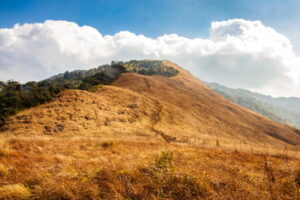
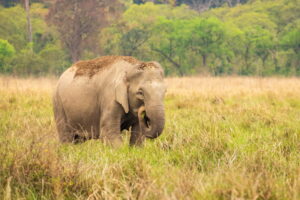
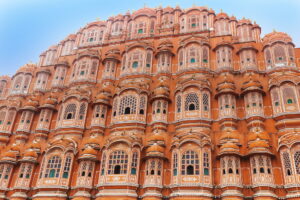
Pingback: An Insight into the Blue City of Jodhpur - My Travel Frames
Pingback: Welcome to Golden Fort in Jaisalmer - The Last Living Fort of India
Pingback: Camping Beside Sam Sand Dunes Near Jaisalmer | Things To Know Before You Go
I am reading your first travelogue. It is nicely written. Would like to read more of your visits.
Thank you. It’s good to know that you liked my travelogue. You can read more about my experience in Rajasthan in the following articles –
https://www.mytravelframes.com/welcome-to-golden-fort-in-jaisalmer-the-last-living-fort-of-india/
https://www.mytravelframes.com/an-insight-into-the-blue-city-of-jodhpur/